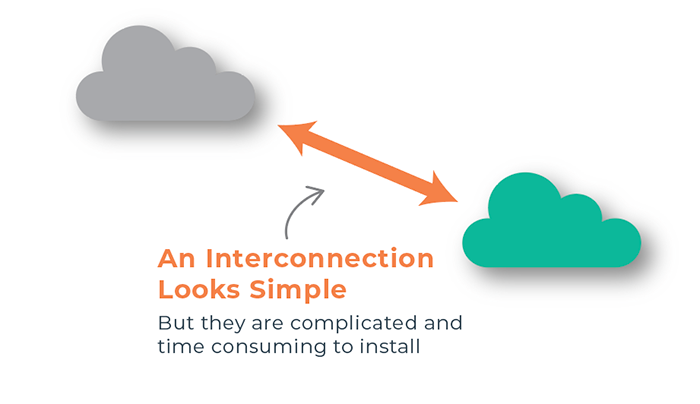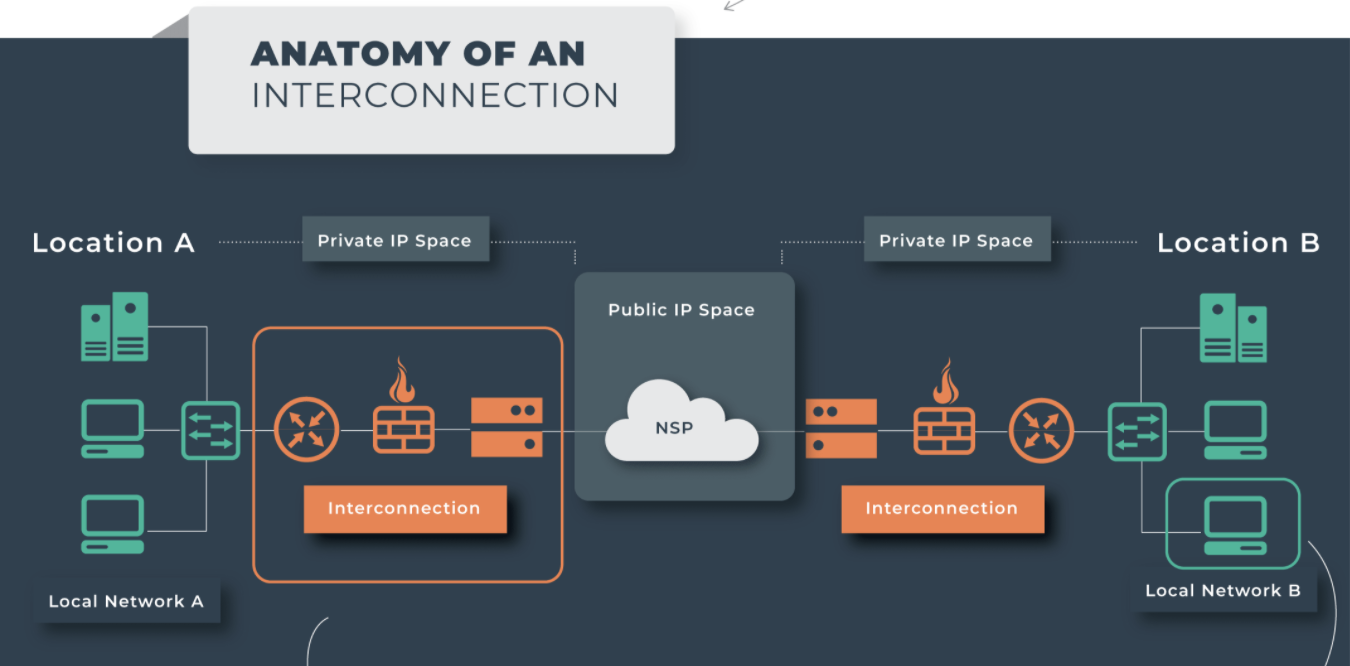As organizations move beyond the initial shock from the impact of COVID-19, they are starting to examine future needs. Many of them are moving applications out of their internal data centers and into either colocation facilities or public cloud environments. To make this change, these organizations are building new network interconnections at an increasing pace. Building a network interconnection requires more than just plugging in a cable. What’s inside a network interconnection?

Network interconnections are required to accomplish multiple tasks. Interconnections are primarily used to join two separate networks together.
This means the interconnection must be able to translate the network addressing schemes between the two networks, exchange routing information so devices on each side can communicate to each other, enforce security policies so that bad actors in either network can’t attack the other network, and finally, the interconnection must operate efficiently and reliably. Creating an interconnection can be complex and can lead to serious issues if it isn’t built or configured correctly.
Let’s look inside an interconnection and examine the network functions needed to make them operate correctly.

To build a basic network interconnection, we need several functions: network address translation, routing, packet filtering, and sometimes encryption. These functions are created with either hardware or software, and typically, they are delivered using devices such as routers and firewalls. Often networks have multiple tiers or layers of routing which could require installation of even more equipment to create a new interconnection.
Once you see what’s inside an interconnection, it’s not surprising that it can be a bit tricky to build. Not only must your IT team install the equipment, but they will also need to configure the devices so that they properly interoperate with the other network. Since the same set of network functions are needed on both sides of the interconnection, whoever is operating the network at the other end will need to build and configure their devices as well.
Stop thinking about building interconnections the old device-centric way
If you need new equipment, it’s not unusual for a new cloud interconnection to take weeks, if not a couple of months, to be created and made operational. Years ago, this amount of time was small in comparison to the overall effort of deploying an application. Now, however, IT teams and Cloud Service Providers move much faster. When you consider the cost savings gained by moving applications or workloads into a colo or cloud environment, the time it takes to build a network interconnection can have a large financial impact.
Now that you know a bit more about what’s inside an interconnection, you can start to think about how you might be able to minimize your interconnection build times. One last thing to think about is that to build an interconnection, you need a routing function, but you don’t need a router. Additionally, you need data encryption, but you don’t necessarily need a firewall. Stop thinking about building interconnections the old device-centric way and consider how you could get the functions you need without the cost and time lost to buying, installing, and setting up new equipment.
Many colocation data center operators and some network service providers are deploying technologies to create Layer 3+ Software-Defined Interconnection solutions that will allow you to create network interconnections in minutes. If you want to learn more about who these providers are, drop us a note.


